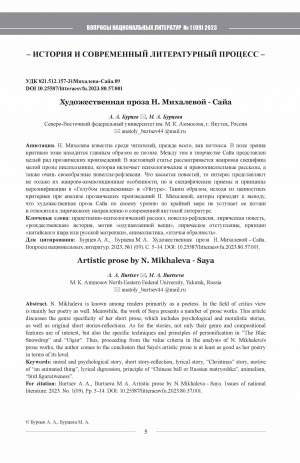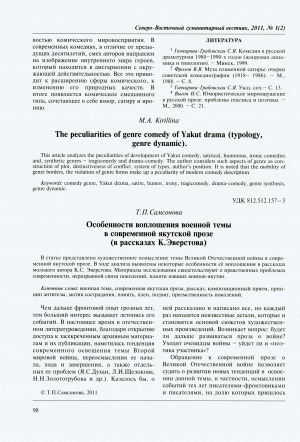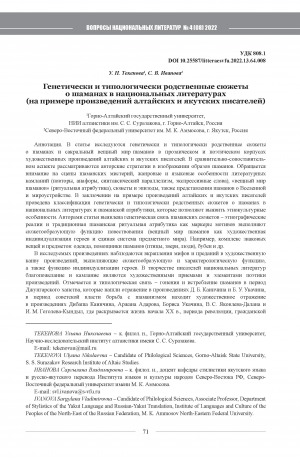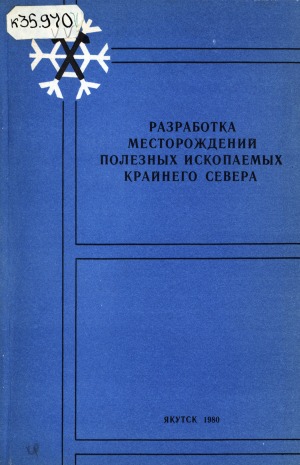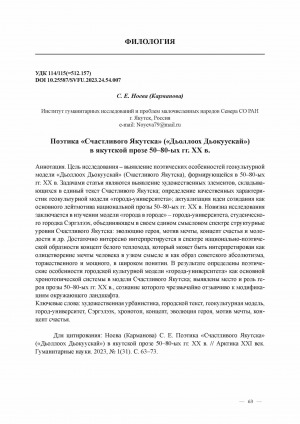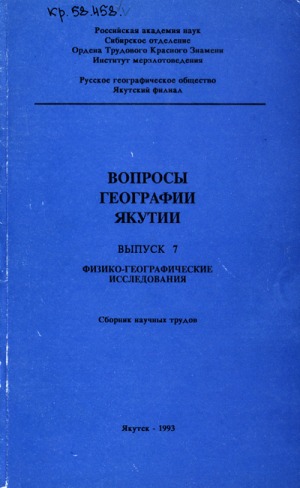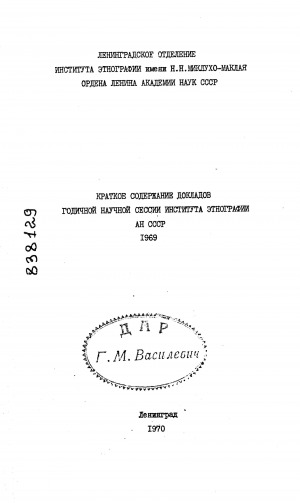
Философская концепция красоты в рассказе Ю. В. Буйды "Лилая Фимочка" = Philosophical beauty concept in the Yury Buida’s story “Lilaya Fimochka”
Статья в журнале
Русский
821.161.1-32Буйда.09
10.25587/2782-6635-2024-4-11-19
Ю. В. Буйда; современный рассказ; концепция красоты; мотив; символ; система образов; пародия; философский подтекст; прием деконструкции; иррациональное; Buida; modern story; concept of beauty; motif; symbol; image system; parody; philosophical implication; deconstruction technique; irrational
Under conditions of deformation, the attitude of a modern person to spiritual and moral values is of particular relevance to the axiological potential of the philosophical category of beauty and its interpretation in the works of the latest Russian literature. The purpose of this article is to study the author’s interpretation of the aesthetic imperative “beauty” in the story by Yury Buida “Lilaya Fimochka”, which is the quintessential author's understanding of this constant. The tasks were to identify the specifics of the concept of beauty through the analysis of plot and composition, a complex of motifs, a system of images and characters. To achieve the purpose and objectives, methods of cultural-historical and motivational analysis we are involved. It was determined that the plot of the story is an author's myth of the death of divine beauty as the basis of a harmonious universe. Receptions of deconstruction, antithesis, detailing and parody contribute to isolating the following attributes of beauty: blindness, unconsciousness, indifference to man, characteristic of a milestone. Buida’s artistic discovery is the double vision technique (authorial and characters), revealing the ambiguity and diversity of beauty, sometimes perceived as ugliness. It is important that evil and beauty are endowed with an irrational nature. The semantic pairs were revealed: church - market / bazaar, star - man, light - darkness, beauty - a monster, the semantics of which are conceptual in nature. The complex of motives is represented by the motifs of self-abasement, suffering, retribution and resurrection, carnival life, forming the philosophical implication of the work. Ambivalent symbolic images (temple, eyes, angle, stone, cross, ice) bring diversity to the story. The following types of parts were distinguished: olfactory, portrait, habitats, zoomorphic, optical, color, the transformation of some parts into a metaphor is noted. Beauty, which appears as the foundation of world, predetermines the possible spiritual revival of humanity mired in sin.
Дедюхина, О. В.
Философская концепция красоты в рассказе Ю. В. Буйды "Лилая Фимочка" / О. В. Дедюхина ; Северо-Восточный федеральный университет им. М. К. Аммосова // Вестник Северо-Восточного федерального университета им. М. К. Аммосова. Серия "Вопросы национальных литератур". - 2024. - N 4 (16). - С. 11-19. - DOI: 10.25587/2782-6635-2024-4-11-19
DOI: 10.25587/2782-6635-2024-4-11-19
- Языкознание. Филология. Художественная литература > Литература. Литературоведение > Теория литературы. Изучение литературы. Литературная техника > Художественная литература на отдельных языках > Якутская (саха) литература,
- НАУКА ЯКУТИИ > ЯЗЫКОЗНАНИЕ. ФИЛОЛОГИЯ. ЛИТЕРАТУРОВЕДЕНИЕ. ХУДОЖЕСТВЕННАЯ ЛИТЕРАТУРА > Литература. Литературоведение.
Войдите в систему, чтобы открыть документ
